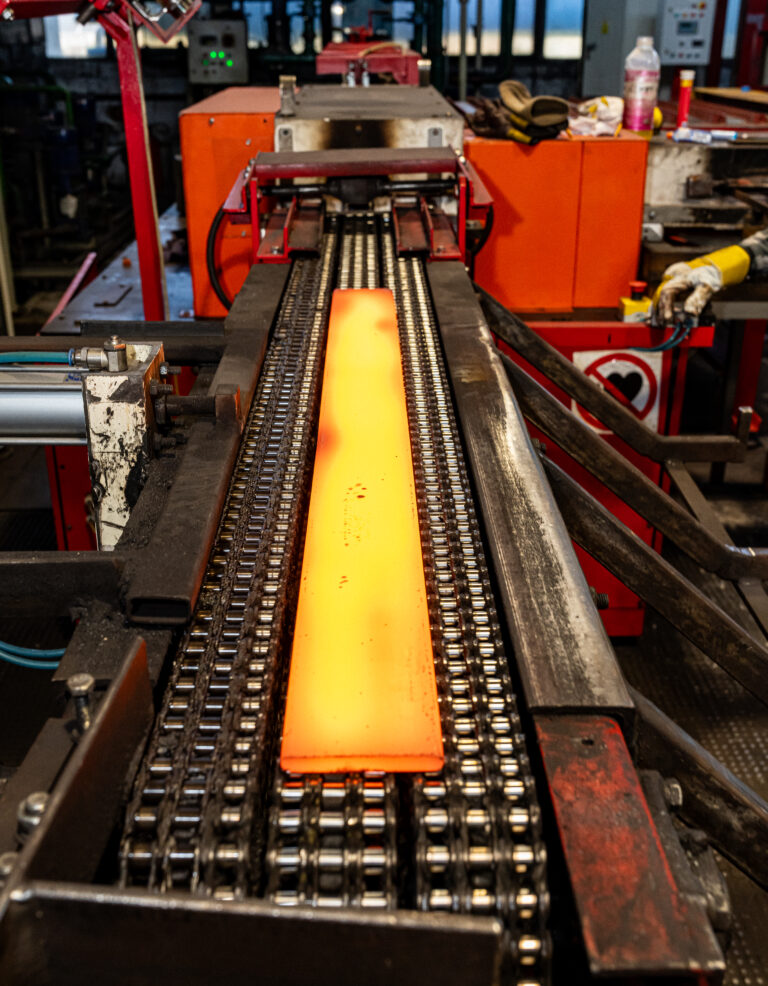The production of a high-strength component begins with induction heating, which allows the material to be quickly and evenly heated to the appropriate temperature without contact with a flame.
Using an electromagnetic field, the steel achieves the ductility necessary for further processing.
The next step is plastic processing, which involves shaping the material by pressing, rolling, bending, or forging. This process gives the component the desired shape and initial mechanical properties.
To reduce the brittleness resulting from hardening, steel is tempered. This process involves reheating the material to a lower temperature, achieving a balance between hardness and impact strength.
The component is then placed in a chamber where it is shot-blasted. A stream of fine metal particles strikes the component’s surface, removing contaminants and scale, and improving the adhesion of protective coatings.
Finally, the prepared component is coated with a protective layer using powder coating. The powder adheres electrostatically to the surface and is then cured in an oven, creating a durable, aesthetic, and corrosion-resistant coating.





